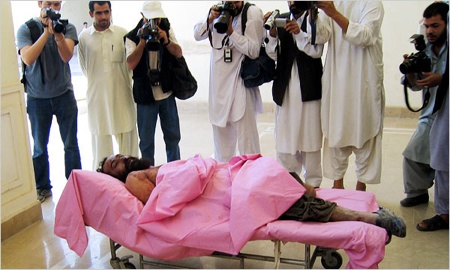Notes
Your Turn: What About Anya?
Why is it that the pharmaceutical industry comes under so little scrutiny?
Could it have something to do with the fact the industry continues to finance the FDA’s oversight function, or that the industry buys off the media with $4 billion a year (yes, billion) in direct-to-consumer advertising (an amount that has doubled since 2000), or that it’s standard operating procedure to buy off financially reward doctors?
The scarcity of mainstream coverage on this subject makes every write-up that much more important. That’s why I wanted to focus on Thursday’s article in the NYT regarding the way the industry markets psychiatric medication to children.
The story is structured around the experience of 15-year-old Anya Bailey (shown above) who, three years ago, was put on an anti-psychotic for an eating disorder. (Her psychiatrist at the time was being paid by the drug’s manufacturer to give marketing lectures for the product.) Anya’s appetite returned, but the medication — which was also heavily sedating — led to a disabling nerve condition in her back.
It wasn’t until last year that Anya went to the Mayo Clinic and was told to stop taking the drug. With counseling, her weight normalized. According to her mother, her back is also improving with the help of medication targeted specifically for that condition.
Because, as mentioned above, the behavior of the drug industry receives scant attention, the accompanying photo also becomes a signature one. I’ve got a number of questions about it, though.
How much is this portrait illustrative of the problem? And if it does speak to the problem, could it actually be doing so at Anya’s expense? For example, if she’s psychologically sound, does the pose, the expression, the exact location, the general setting, and/or the 16-ounce coffee mug suggest that Anya’s a healthy girl who has been taken advantage of by the system, or does the photo, itself, take advantage of her again?
I was also wondering if the image might also be making some cultural inference about community and/or suburbia as a factor in the medication (and over-medication) of children or consumer passivity in the face of medical and commercial exploitation.
(image: Fabrizio Costantini for The New York Times. May 2007. East Grand Forks, Minn. nytimes.com)



Reactions
Comments Powered by Disqus